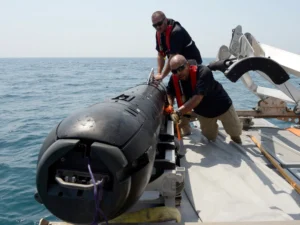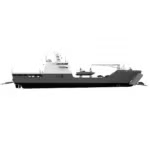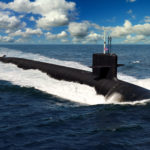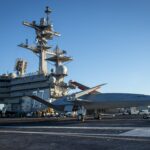
The Navy awarded Leidos [LDOS] a $36 million contract modification exercising an option to build, test and deliver four engineering development model Medium Unmanned Undersea Vehicles (MUUV). A year ago, the Navy selected Leidos over three competitors for a $12 million contract to design the MUUV, with options that could raise the total value to $358 million (Defense Daily, July 8, 2022). The announcement said this latest contract will support the Navy’s next generation of the Razorback UUV and Viperfish…

 By
By 











